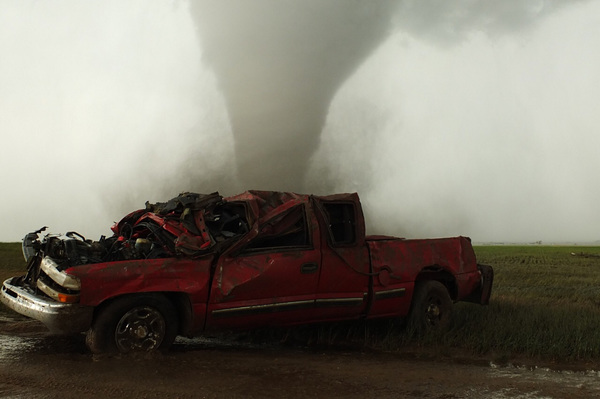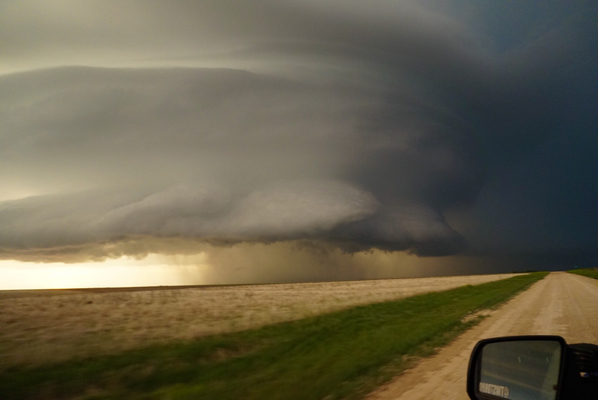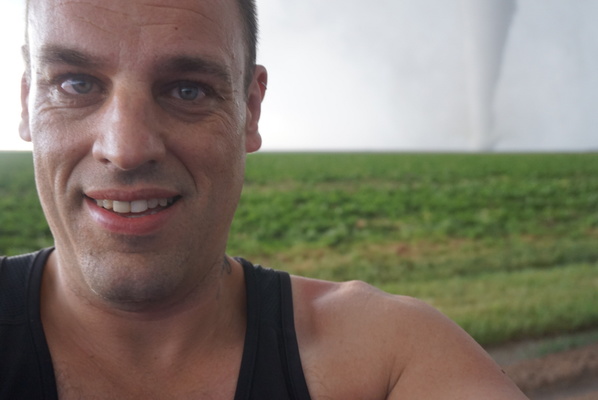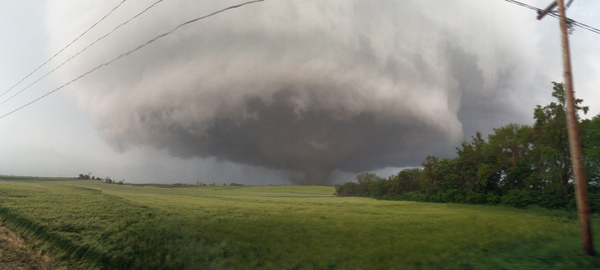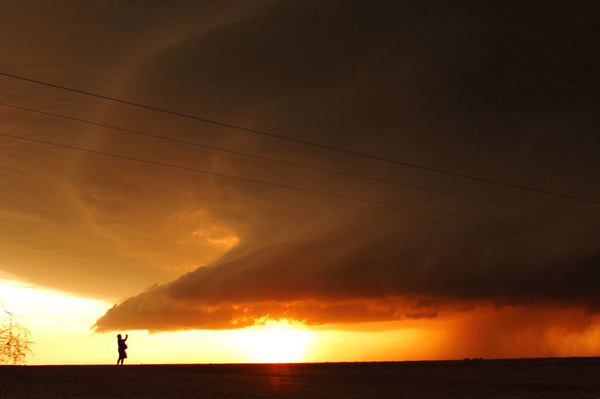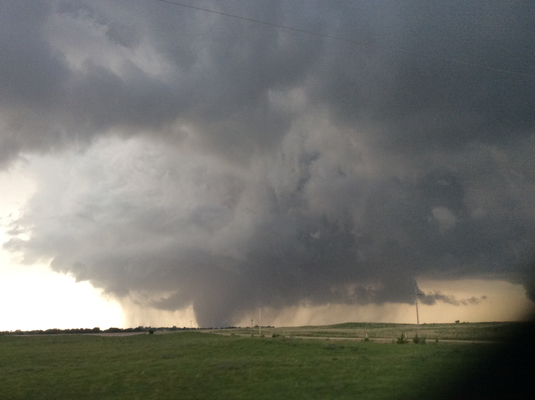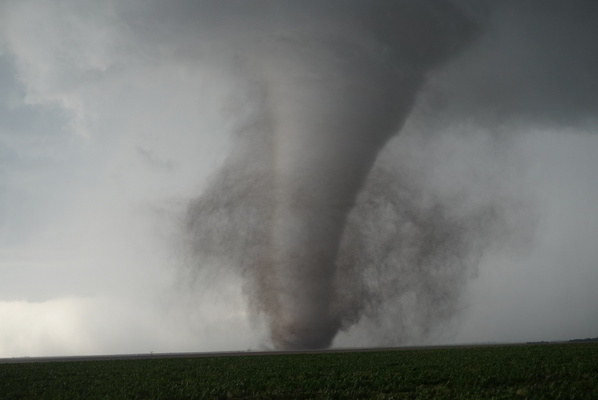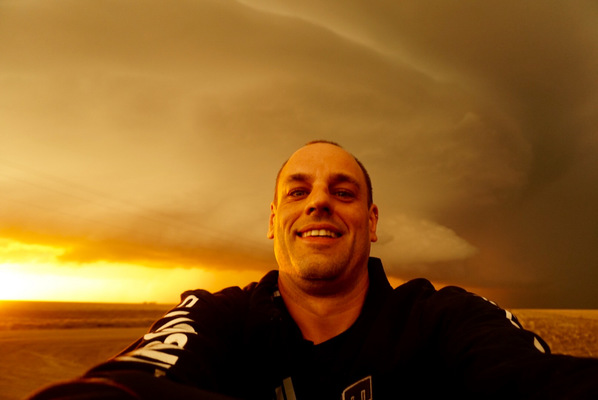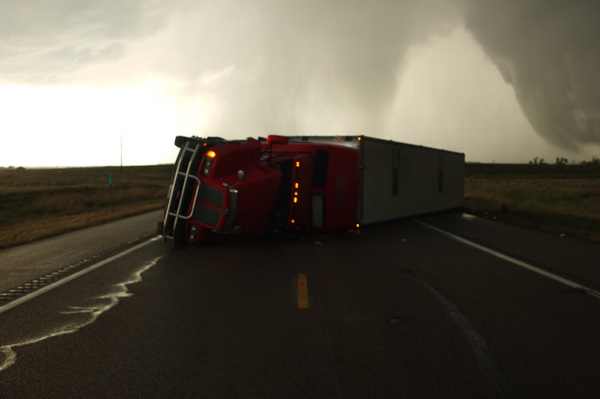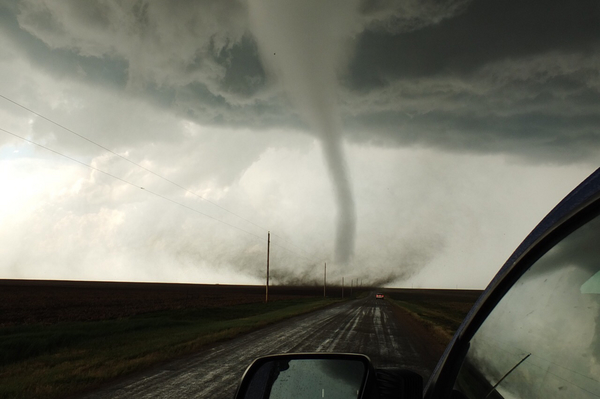
By ALANA MITCHELSON
PAKENHAM thrill seeker Chris Langdon found himself frightened for the first time in his life as he and his team navigated their way into the eye of a tornado.
With an innate passion for being in the thick of severe storms and an appreciation for the power of Mother Nature, the self-proclaimed ‘weather geek’ recently returned from his second trip to the United States with the sole purpose of chasing tornadoes.
He and his storm chasing team of adrenaline junkies from across the world chased 16 tornadoes in 16 days in Kansas which included a three-hour chase of a big breakout of 12 tornadoes in the one day.
“Luckily they formed in a rural area. Had they been near civilisation, it would have been a natural disaster. It would have wiped out towns,” the 40-year-old said.
“It’s pretty exciting getting up close to tornadoes but one time we decided to drive into the eye. It was pretty hairy. I don’t think I’ve ever felt so frightened. We got debris flying across us.
“We recorded the whole thing on video and the whole time you can hear me yelling ‘stop, stop!’”.
But storm chasing is not all simply for the thrill. There are moments when Mr Langdon and his team drop the chase to go into search-and-rescue mode as storm chasers can often be the first to a scene of devastation.
See one of the tornadoes that Chris Langdon and his team are chasing hit a house in Kansas. (StormChase.TV)
The storm chasers would also typically be functioning on three hours sleep per night.
During his stay in the USA a powerful tornado packing winds up to 280km/h lasted for about 90 minutes, narrowly missing the centre of Dodge City in Kansas.
“They got very lucky. The tornado headed straight for them but then went around the city centre. Homes were destroyed and we saw dead animals everywhere,” Mr Langdon said.
“It just tears up the trees and strips them of their leaves. Eighty-metre trees were cut down to about 10 metres.
“It creates this smell of wet wood, that’s usually a good indicator that there’s a tornadoes on the ground doing some damage.
“I’ve seen railway lines literally bent from the strength of a tornado – and you know how thick railway lines are.
“It did rock me quite a bit emotionally. When you see that kind of devastation, the first thing you think about is your family and your own home.
“They reckon the tornado was one of the worst ever. Thankfully no one was killed.”
The day before had been spent chasing three tornadoes that had formed simultaneously and were travelling within one-and-a-half kilometres of each other.
During those two days of excitement Mr Langdon described the restaurants as being full of storm chasers comparing stories and thanking their lucky stars they were OK before soldiering on to the next day of storm chasing.
Prior to this trip he had “signed his life away” to undertake an extreme tornado tour in the US.
But still unsatisfied, Mr Langdon yearned to get even closer to the tornadoes. He plans to return to the US again in another two years’ time to continue the chase where he left off.
His team of four, based in Oklahoma, would check the forecasts each day to anticipate where the “best“ storms would take place, usually travelling five hours to Kansas.
One member of his team had chased with American meteorologist Reed Timmer who is considered to be one of the best storm chasers in the world.
“When you go storm chasing, there’s no doubt you’re going into an unsafe environment. It’s important you don’t go if you don’t know what you’re doing.
“You’ve got to be responsible about it. If I hadn’t done my research, had the radar equipment and a strong team, it’s not something I would undertake,” he said.
“I’ve done a lot of online research. You need to understand the ingredients of a storm and the parts of a storm.
“There are times when your vision can be limited so we had four sets of eyes including a driver. I was usually the one keeping an eye on the power lines.
“We had first-aid kits, measuring tools, equipment, radar and computers set up in the car with weather charts. Your radar is really your lifeline.”
Their car was stripped of its duco and coated with Line-X to protect the storm chasers against severe weather like hail and flying debris.
Mr Langdon amusingly recounted seeing a fellow storm chaser driving up close to the tornadoes in his Volkswagen Jetta with grills built over its windscreen and sun roof.
“I’ve always liked to get in amongst hail and rotational storms but in Australia you don’t get the extreme volatile weather that you get in America,” Mr Langdon said.
“The biggest thrill is when you wind down the window and hear the roar of the tornado.
“I think my wife thinks I’m crazy and my six-year-old daughter tells me she only likes the little hail stones. I think it’s safe to say they were pretty concerned and were glad to have me back home.
“But as storm chasers, we contribute to spotting the tornadoes and calling them in to appropriate authorities, warning people and recording them all at the same time.
“Keeping people safe is the main priority. Even if that means stopping the chase.”
Follow Chris Langdon’s storm chasing adventures at the StormChase.TV Facebook page.


